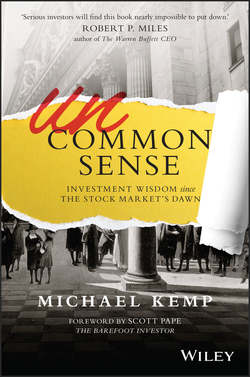Читать книгу Uncommon Sense - Pape Scott - Страница 13
На сайте Литреса книга снята с продажи.
Part I
THE LIMITSOF REASON
2
THE ART OF PREDICTION
ECONOMIC MODELLING
ОглавлениеEconomists spend a lot of time developing models to predict our economic future. Businesspeople and politicians then use the output from these models to make plans and to deliver bold statements about the future.
One night in 2012 I was listening to a popular economics podcast called Planet Money, and the topic of discussion was economic modelling. Mark Zandi, chief economist with Moody's Analytics, was being interviewed. He is an economic researcher with a strong interest in macroeconomics and financial markets.
Zandi gave an interesting insight into the problems faced by economists who use computer models as an aid to framing economic policy. He'd spent 20 years building and tweaking his model of the macroeconomy. It comprised 1700 variables – the inflation rate, interest rates, employment level, oil prices, consumer confidence, national debt and so on. Combined they painted a complex picture of economic interrelationships affecting each other in either a positive or a negative way. Want inflation to fall by half a per cent? Fiddle with interest rates. Want retail sales to pick up? Play around with consumer confidence. But changing one variable doesn't mean just one other variable changes; it unbalances many, many others.
Zandi's model is the result of 20 years of unrelenting hard work. It attempts to take 1700 economic variables into consideration. Does it work? Who knows? Not even Zandi knew the answer.
